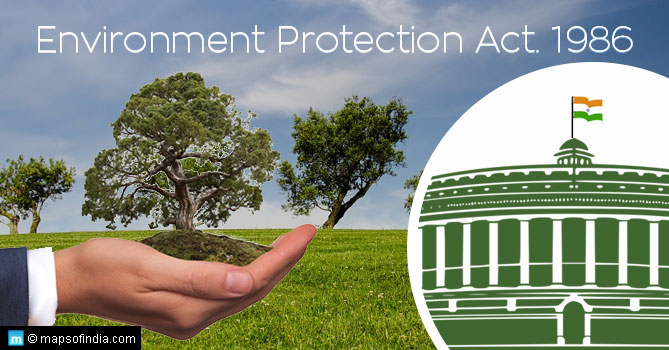On a cold wintery midnight in December 1984 when the city of Bhopal was sound asleep and the workers at Union Carbide India Ltd. pesticide plant were completing their routinely task, no one was aware about the tragedy that was about to strike the city. Suddenly, the families and workers living in the vicinity woke up to sound of emergency alarm bell and repugnant smell that filled the air making it difficult for the local population to breath. By the morning, more than thousand people had already died due to the gas leak that took place inside UCIL plant and spread in the atmosphere. The Methyl isocyanate (MIC) gas in the atmosphere exposed people to severe irritation in the eyes, coughing, blepharospasm, burning sensation within the respiratory tracts. Till now, families are suffering because of the horrors committed by UCIL with more than 500,000 people affected, while owners fled the scene due to weak environmental and civil laws.
The watershed moment that led to the formulation of EPA
Bhopal Gas Tragedy considered to be the worst industrial disaster in the world was a watershed moment for India and country’s Parliament, as the lawmakers gathered to formulate stronger norms, acts, policies, and laws to ensure that such horrific incidents do not occur in India again. The Environment Protection Act of 1986 (EPA) was enacted by the Government of India under Article 253 of the Indian Constitution. The Act came in as a result of the Bhopal gas tragedy as well as India’s commitment to follow United Nations Conference on the Human Environment that took place at Stockholm in June, 1972. The conference was attended by 122 nations that passed the Stockholm Declaration, that contained 26 principles that focused on development, environment, and the necessity of human interaction with the environment. The aim of the Environment Protection Act of 1986 is to improve and protect the human environment, most importantly to prevent hazards from happening and causing damage to the ecology.
Provisions of Environment Protection Act 1986
On November 19, 1986, the Environment Protection Act of 1986 came into force and was extended to the whole country. The Act comprises of 4 chapter and 26 sections pertaining to the roles and responsibilities of different government actors and agencies. Chapter 1 deals with the title of the Act, jurisdiction and extend, when the act has been enacted, and most importantly the definition of terms that are involved in the Act. Chapter 2 emphasises on the power that resides with the Central government pertaining to the Act, while Chapter 3 talks about actions that Central government can take to protect the environment. The last chapter outlines the power of the Central government to appoint officials to ensure that the objectives of the Environment Protection Act of 1986.
The EPA of 1986 enables the Central government to act or give direction for process, closure of a particular establishment violating the rules and guidelines of the Act, regulation and prohibition of an industry, and many such things that protects and ensures that the EPA is followed. Central government can formulate rules and regulations to administer environment pollution. Environment Protection Act of 1986 includes penalties incase there is a violation of any aspect of the Act. In case there is any such violation, the head of the department and office incharge are liable for the offense.
The Environment Protection Act has defined certain areas as restricted corridors due to the ecological sensitivity such as Aravalli Regions in Alwar, Rajasthan, Coastal sensitive zones, and Doon Valley in Uttarakhand.
A move to dilute the EPA
In 2015, the newly elected Central government wanted to bring in new amendments to the bill that instead of strengthening it would have diluted the Environment Protection Act, that since 1986, has helped protect the country’s environment from being exploited at the hands of private contractors and miners. One of the proposed amendments included the constitution of an adjudicating body where grievances could be heard before reaching the National Green Tribunal, while the second proposal to review three paramount points of impact of evaluation before giving a go ahead to any project. However, after protest from several environmentalists and civil society members who wrote to the Ministry of Environment and Forest to rollback the proposed the amendments. The move by the government has been put on the back burner since then and kept the EPA intact.




